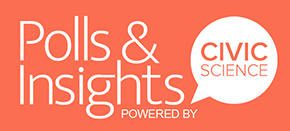In a recent survey conducted by CivicScience, a striking contrast emerges between those who frequently tune in to Major League Baseball (MLB) games on the radio and those who rarely or never do. The survey reveals intriguing insights into the listening habits and demographics of MLB radio audiences.
Among the respondents, 16% reported listening to MLB games on the radio ‘a few times a week’, while a significant 43% admitted to ‘rarely or never’ tuning in. This disparity highlights a divide in engagement levels with America’s pastime through the traditional medium of radio. Suburban residents show a notable inclination towards frequent listening, with 61% of weekly listeners residing in suburban areas. In contrast, 43% of those who rarely or never listen also live in the suburbs, indicating a diverse range of listening habits within these communities. Urban and rural areas display less engagement, with only 14% and 20% of weekly listeners, respectively.
Education appears to play a significant role in listening frequency. Among weekly listeners, 35% hold a graduate or professional degree, suggesting a correlation between higher education levels and a penchant for tuning in regularly. Conversely, only 19% of those who rarely or never listen possess a graduate or professional degree, pointing to a potential link between educational attainment and radio listening habits.
Parental status also influences listening behavior. Both parents and non-parents are equally likely to listen a few times a week, each accounting for 40% of weekly listeners. However, grandparents are more inclined to rarely or never listen, with 30% falling into this category. This suggests that familial responsibilities and generational differences may impact radio listening preferences. Age demographics further illuminate the listening landscape.
Individuals aged 45-54 and those 65 or older are more likely to listen a few times a week, with 29% and 19% representation, respectively. In contrast, 24% of those who rarely or never listen are aged 65 or older, indicating a potential shift in media consumption habits among older generations. Income levels also reveal interesting patterns. Among weekly listeners, 16% earn between $50,000 and $74,999, while 15% earn between $150,000 and $199,999. This suggests that MLB radio listening spans a broad income range, with engagement not confined to a specific economic bracket. Meanwhile, 30% of those who rarely or never listen earn less than $30,000, highlighting a potential economic factor in listening habits.
Overall, the survey underscores the diverse factors influencing MLB radio listening habits, from suburban living and higher education to age and income levels. These insights offer a nuanced understanding of the MLB radio audience, revealing both the steadfast loyalty of frequent listeners and the challenges in engaging those who rarely tune in.
This article’s data comes solely from CivicScience’s database, which contains nearly 700,000 poll questions and 5 billion consumer insights. Our AI content creation tool, DataScribe, supported the article.

